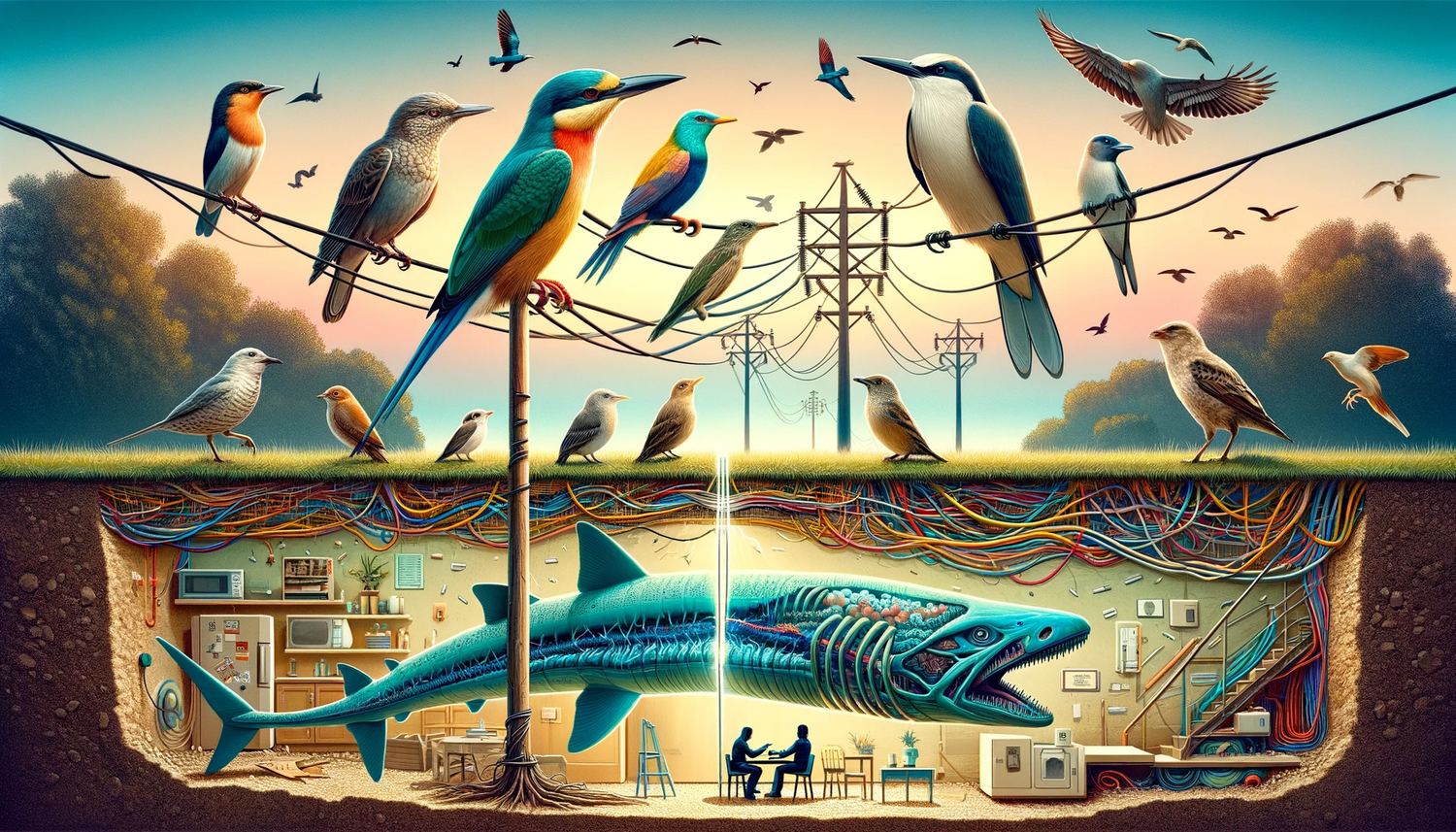The Fascinating Science Behind Birds on Power Lines
Why Don't Birds Get Electrocuted?
Have you ever wondered why birds can sit on power lines without getting hurt? It seems like they should get shocked, but they don't. The answer lies in the way electricity works and how birds interact with power lines. Let's unravel this mystery and explore other similar examples.
Understanding Electricity and Circuits
The Basics of Electrical Flow
Electricity flows along pathways called circuits, and it always looks for the easiest path to the ground. This is known as the path of least resistance. Power lines are designed to be a convenient path for electricity to travel along.
The Role of Conductors and Insulators
Materials that let electricity flow easily are called conductors, like the metal in power lines. Insulators, on the other hand, don't let electricity pass through easily. These include rubber, glass, and air.
The Secret of the Birds' Safety
Completing a Circuit
For electricity to harm the bird, it needs to flow through the bird’s body. This can only happen if the bird touches another conductor at a different voltage at the same time, like another wire or the pole. Since birds usually touch only one wire, they don’t create a new path for electricity, so it continues along the wire instead of through the bird.
The Path of Least Resistance
Electricity is lazy – it takes the easiest route. The metal wire offers less resistance than the bird's body, so the electricity ignores the bird and keeps flowing along the wire.
Other Examples of the Path of Least Resistance
Lightning and Trees
Lightning is a dramatic example of the path of least resistance. When lightning strikes, it seeks the easiest path to the ground. Trees often become targets because they are tall and filled with sap and water, which are good conductors.
Household Wiring
In our homes, wiring systems are designed to provide a safe path for electricity. If there's a fault, electricity should travel safely to the ground through the wiring rather than through people or objects.
The Importance of Grounding in Electrical Safety
What is Grounding?
Grounding is a safety measure used in electrical systems. It provides a path of least resistance for electricity to follow in case of a fault. This path leads directly to the ground, which is a great conductor.
Grounding in Everyday Appliances
Many appliances have three-prong plugs, where the third prong is for grounding. This design helps to ensure that if there's a fault, the electricity will go to the ground, not through someone who touches the appliance.
Human Safety Around Power Lines
The Danger of High Voltages
Unlike birds, humans can get shocked if they come too close to power lines. This is because the high voltage can jump across small gaps of air (which are insulators) and create a path through the human body to the ground.
Safe Distances and Precautions
It's crucial to stay a safe distance away from power lines. Even getting too close without touching them can be dangerous because of the high voltage.
Conductors and Insulators in Everyday Life
Examples of Conductors
In our homes, many things are conductors – like metal utensils, water, and even our bodies. That's why handling electrical appliances with wet hands or standing in water can be dangerous.
Examples of Insulators
Insulators are equally common – rubber gloves, plastic handles on tools, and the rubber soles of shoes. They help to protect us from electric shocks in everyday life.
The Science of Electricity in Nature
Electric Eels: Nature's Power Generators
An interesting example of electricity in nature is the electric eel. These creatures generate electricity in their bodies, which they use for hunting and self-defense. They are living examples of biological circuits.
The Electric Fields of Sharks
Sharks have another fascinating electrical ability. They can sense the electric fields created by other creatures in the water, which helps them find their prey.
Electricity and the Human Body
The Body's Electrical Signals
Our bodies also use electricity. Nerve cells transmit signals using electrical impulses, and the heart uses electricity to keep beating in a regular rhythm.
Medical Uses of Electricity
In medicine, electricity is used in various ways, such as in ECG machines to measure the heart's electrical activity or in treatments like electrotherapy.
Conclusion: The Wonders of Electricity in Our World
A Phenomenon That Connects Us All
Electricity is not just something that powers our homes; it's a fundamental part of our world, from the way birds can safely sit on power lines to the electrical impulses in our bodies.
Continuing to Uncover Electrical Mysteries
The study of electricity is ongoing, and there's still much to learn. Every discovery helps us understand our world better and use electricity more safely and effectively.








